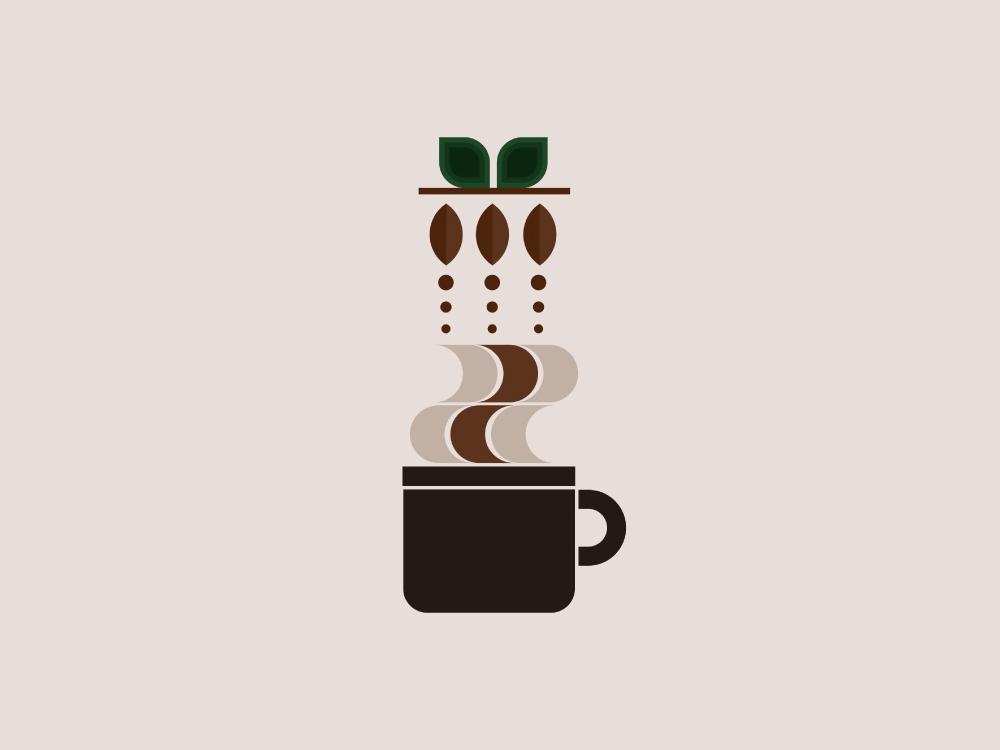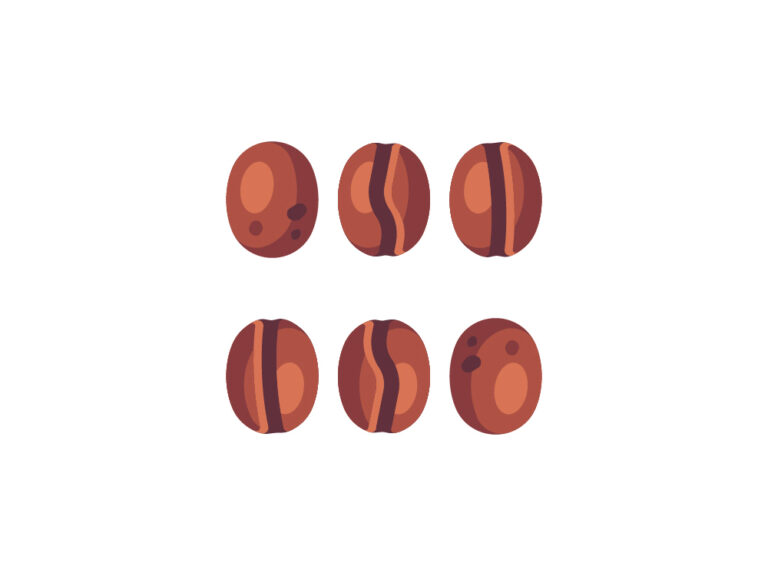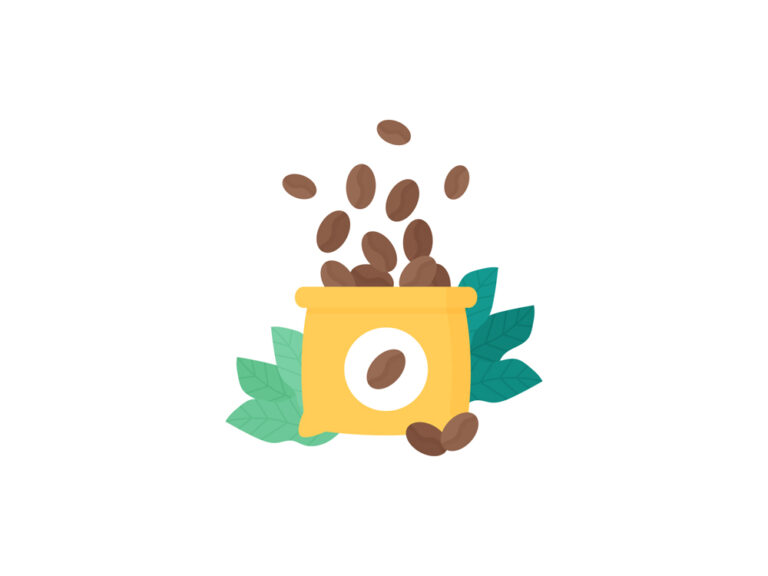
This post may contain affiliate links. As an Amazon Associate and a partner of other brands, I get a small commission if you purchase through my links, at no extra cost from you.
Coffee processing methods are the various ways that coffee beans are roasted, brewed, and ground after harvest.
This article outlines the different types of coffee processing methods and what each method entails.
Additionally, it also looks at the ways in which coffee beans are roasted, the number of stages in a Barista’s typical day, and how many calories are in coffee.
This article is an overview of how coffees are processed to produce the end product enjoyed by consumers around the world.
It takes into account not only big companies like Keurig who process their coffees for ease of use, but also small-batch roasters that take great pride in their craftsmanship.
Let’s start!
Coffee Processing Methods
Let’s discover the three main coffee processing methods, their pros and cons, and how to create each style.
1. Coffee Processing Methods – The Wet Process
The wet process involves plunging the coffee beans into water to extract the valuable constituents.
To begin this process, ripe coffee cherries are harvested at their optimum ripeness put into a floatation tank.
The floatation tank is where the coffee cherries are put into water so that the farmers can choose the ripe ones only.
This happens when the unripe coffee beans stay afloat whereas the ripe ones sink to the bottom of the tank.
The ripe coffee beans are then scooped out and they are ready for the next step in the wet processing method, pulping.
Pulping is when the coffee beans are soaked in water.
This process removes most of the parchment surrounding each coffee bean.
The reason this is done is so that the rest of the process can be done more easily and quickly, with less manual labor involved.
After all, separating ripe cherries from unripe cherries is hard work!
Once pulped, wet coffee beans are moved on to fermentation where they will sit for 12-24 hours depending upon their variety and location.
After this process, the cherries are depulped to remove the fruit and the sticky mucilage (a form of glue) from the bean.
The beans are then fermented, washed, dried, and sorted for uniformity.
A downside is that during this process a good deal of the good flavors in coffee cherries is lost because it covers them with grit and removes some of their oils.
The grit will have been washed off by water during fermentation but many of the oils will have been removed from the beans by being washed in running water.
This is the most traditional of coffee processing methods, and the one that is most commonly used in specialty coffee.
In order to get a better sense of why this is the case, it’s helpful to understand the process itself.
The wet process is commonly used in countries with humid climates, but the dry process is much more popular in regions with hot climates.
This is because coffee cherries are much more susceptible to mold growth when they are exposed to cool temperatures, so beans are usually dried out quicker under these conditions.
In this coffee processing method, the fruit of the coffee cherry is removed immediately after picking.
The cherries are taken to a central location where they are then dried out in the sun or with mechanical dryers to remove any remaining moisture from the beans.
This helps reduce mold growth and gives off a fruity flavor.
In countries such as India, Ethiopia, and Guatemala, this process is usually used because it helps ensure that the beans will not be damaged during shipping.
However, because their product loses a lot of its original flavor, these countries infuse their beans with additional flavors before exporting.
The dry process is usually used in countries with low humidity and good sunlight.
This is because the drying process is dependent on exposure to air and light; this means that there needs to be adequate ventilation.
When will you start enjoying the benefits of the wholesale coffee bean prices?
Coffee processing has a large impact on quality, taste, and cost-effectiveness.
It’s important to know what goes into your favorite drink every morning.
After all, knowing is half the battle!
2. Coffee Processing Methods – The Dry Process
The dry process is one of the coffee processing methods that require no water.
Although it looks like a straight and easy process, it’s quite tricky and there are a number of factors that the farmers have to pay attention to.
In this process, ripe coffee cherries are harvested and taken directly to the dryers for drying.
The drying is done either in the sun or in mechanical dryers depending on where the coffee is grown.
This method is usually used in countries with low humidity and good sunlight.
This is because it’s dependent on exposure to air and light which means that there needs adequate ventilation.
A downside of this type of processing is that it leads to a loss of flavor through exposure to oxygen but infusing additional flavors into beans before export makes up for the difference in quality between this method and the wet process.
After the fruit is removed, they are laid out on tables are dried out either in sunlight.
Once dried, they are ready for the next step in the process: sorting!
During the drying process, the workers may have to turn the beans on the side to maximize the moisture removal rate.
After the beans are dried, they are sorted.
The manner in which this is done varies from company to company, but generally, two factors are taken into consideration while sorting: whether they’re clear or opaque and whether they’re roasted or not.
If the beans are opaque, then it means that they’ve been fully fermented and that they’re ready to be roasted to extract oils and enhance flavors.
If the beans aren’t opaque, then it means that they haven’t been fully processed yet so other processes will have to take place before they can be used for roasting.
The dry processing is normally used in countries with low humidity and good sunlight.
This is because it is dependent on exposure to air and light which means that there needs adequate ventilation.
The dry process leads to a loss of flavor through exposure to oxygen but infusing additional flavors into beans before export makes up for the loss in quality between this method and the wet process.
Sorting refers to removing any defective beans that may have gotten through after drying.
Good quality beans will be uniform in size and color whereas any non-uniform beans will be removed during this step.
These defective beans can be used as filler but not as top-notch coffee due to their lower quality and less enticing flavor profile.
3. Coffee Processing Methods – The Semi Washed Process
This coffee processing method is also known as the honey process.
During this process, the beans are taken to a nearby container where they are cleaned of any remaining fruit or pulp residue.
The next stage is crucial for specialty coffee drinkers.
The beans are placed in tanks for anywhere between 4-24 hours where they soak in water.
This can remove up to 80% of their natural green color, making them ready for export without altering the taste too dramatically.
They then go through a floatation tank that separates the ripe and unripe beans. After that, the skin and pulp are carefully removed before going on to the next stage.
The cherries are taken to a central location where they are then pulped and fermented.
Afterwards, the beans are then dried out in the sun or with mechanical dryers.
Compared to the traditional wet process, semi-washed coffee is better for maximizing flavor during the drying process because it removes only part of the fruit ruining all of flavor and nutrients.
However, semi-washed coffee is still susceptible to mold growth during the drying phase so most producers will add ammonia gas to delay this degradation effect.
Coffee Processing Methods Controversies And Outliers
Because of the high potential of damage during the semi-washed coffee process, most growers are not comfortable selling their products to big companies.
This is why small-batch specialty roasters are able to export their beans using this coffee processing method.
The semi-washed coffee process has also been criticized by some scientists because it allows mold to grow during the drying phase of this method.
Coffee drinkers have jumped into action to boycott full-saturated coffees made with the semi-washed process because of these scandals.
It’s important to note that there are some direct outliers who use this coffee processing method successfully at home or in small scale farming operations.
This means that there is no better or worse — just different — methods.
The methods we use to process our favorite drinks each day also determine our quality of life and health.
So it’s important to choose the coffee processing method that’s right for you and your own personal taste!
Coffee Processing Methods – Fully-Washed vs Semi-Washed
In fact, there’s a fine line that separates these two coffee processing methods.
In the semi-washed method, the fruit of the coffee cherry is removed shortly after picking.
However, some workers leave a thin layer of skin to add a bit of color and flavor to the bean.
This is what gives these beans their slightly tan appearance.
In addition, some farmers will add water while they’re removing the rest of the fruit from the cherries to cut down on drying time and mold growth while preserving more flavor.
This method is known as a ‘pulped natural’ or a ‘pulped natural process’.
A few countries that produce using this method include India, Ethiopia, and Guatemala.
Another variation of this coffee processing method is called ‘honey processing’.
Here, the beans are not fully pulped but they are still fermented for up to 30 days.
After this period of fermentation, the beans go through a series of treading and cleaning processes before they’re ready to be exported.
This coffee processing method has become increasingly popular in recent years because consumers can enjoy coffee with its original color and flavor without damaging the bean.
These methods are best suited for countries with lower humidity or higher temperatures than most countries use for semi-washed coffees.
Most partly-washed coffees will also undergo a final drying process after fermentation where they will be exposed to cool temperatures to finish off the drying process.
The most common method for drying coffees is to use sun or mechanical dryers; however, some countries such as India use an alternate method called the Habanero Drying Method which is used to dry peppers..
It’s important to note that each country has different ways of producing and drying their coffee.
Coffee Processing Methods – Fully Washed Process
During a fully-washed process, the picked beans are put into the water where the unripe ones will float and the ripe ones will sink, which eases the separation process.
This process differs from the semi-washed method because it removes all of the fruit off of the cherries and uses a variety of methods to clean beans.
The previous step is critical in order to remove any mold or bacteria that may be present after picking and sorting.
After this, the beans are then cleaned and sorted again to remove any remaining remnants of pulp that could cause damage to the coffee’s flavor once brewed.
This level of cleaning prior to drying also allows these beans to retain their shape and size, allowing for much more efficient shipping over shorter distances.
For this reason, fully-washed coffees are typically more exported over longer distances.
This method is popular in South American countries such as Brazil, Colombia, and Argentina because of their tropical environments.
It’s also considered the most expensive coffee processing method because these beans need to go through a more intensive washing and drying process prior to export.
Because of this extra cleaning process, the end product tends to be more expensive than other coffee processing methods because of the cost of labor needed in all stages of the process.
This is why coffees produced with this method are often best suited for exports or specialty markets that require higher quality coffee due to its longer fermentation time needed for proper drying.
There are also two outliers that employ a similar coffee processing method as the fully-washed method.
These countries include Ethiopia and Yemen.
They use a slightly different technique which involves fermenting the beans for up to eight days to break down the pulp and mucilage around them.
This process also softens the beans and can make them easier to digest for some consumers.
This extra step of fermentation is helpful because it allows for faster drying but limits mold growth during the drying phase.
However, this method isn’t as popular as the traditional fully-washed process because its taste is considered too acidic.
In fact, some people have reported vomiting from this method of processing.
So, take a look at your favorite coffee brand and see which processing method they use to create their beans.
It’s easy to find out because many coffee roasters will give you a visual description of each coffee’s method of processing as well as its quality and freshness level.
For example, a fully-washed process may mean that the beans go through a multi-stage drying process before they’re ready for export or packaged for sale.
The same can be true for other coffees that use semi-washed processes.
All in all, it’s important to look at the certification label to make sure that the beans are how they claim to be.
It’s also a good idea to ask your local coffee shop which beans they’re serving and their method of processing.
Lastly, if you’re ever unsure of the coffee you’re buying, just contact the roaster directly and ask them about it.
The Drying Process
If you want to know what usually happens after the first stages of the coffee processing methods mentioned above, read on!
After the first stages of sorting and cleaning have been completed, it’s time to begin the drying phase.
This is where things get a bit more complicated.
During the drying process, coffee beans are subjected to several levels of heat that will help them lose some of the moisture that they absorbed through fermentation.
The actual range of temperatures and length of time needed to dry these beans can vary depending on the method and climate of the country in which they’re produced.
This is pretty standard for all coffees; however, there are some notable differences in some countries’ drying processes:
North America: Coffee beans will be dried at temperatures around 100°C (212°F) for an average 10 days. This is usually enough time to dry the beans completely.
South America: After the drying process, most South American coffees will go through a final stage of sorting.
This is important because each country’s coffee has its own unique taste and quality based on microclimates, soil quality, and other factors.
This means that they’re typically not uniform in consistency across countries.
Africa: After they’re sorted, Africa’s beans are dried quickly to retain their shape and size for shipping purposes; thus allowing them to travel distances efficiently.
The final drying phase lasts around 4-5 days before exporting the beans across international borders.
Asia: Coffee beans are dried at lower temperatures around 60-70°C (140-160°F) for about 10 days.
These beans are typically sent to the U.S. for shipments over shorter distances.
Middle East: Similar to Asia, coffee beans are dried at low temperatures around 60-70°C (140-160°F) for 10 days before being shipped to consumers across international borders.
Other countries use different methods that include drying outdoors on covered patios or concrete slabs, covered concrete patios that expose the beans to sunlight, or old-fashioned drying beds.
Some of these methods may use a combination of the above methods to achieve the best results.
This is also where roasters such as Starbucks play a big role in the way we buy and consume coffee because they often grade their coffees based on how it has been processed and its level of freshness.
This means that beans that have been dried longer tend to produce a “smoother” tasting coffee than those that have been roasted and ground more recently.
So, next time you’re enjoying your favorite cup of joe, take the time to ask the barista about what kind of beans they’re using and how long it’s been since those beans were roasted.
You may just get an education on the role Starbucks and other coffee giants play in the production of your morning cup o’ joe!
Final Thoughts on Coffee Processing Methods
There you have it! Now that you know more about the coffee processing methods used to produce your coffee, it’s time to enjoy a fresh cup of coffee.
Just remember that nothing beats the experience of drinking something fresh and hot in-house.
If you like what you’ve learned about different coffee processing methods, check out some of our favorite brewing methods here.
And if you’re looking for a new coffeemaker, we’ve put together a buyer’s guide for all types of coffeemakers and their features. Happy brewing!






